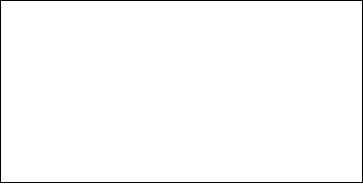
passages. Use the cleaning solvent in a well-ventilated
These tools, like other special tools, should be kept
area. Avoid prolonged inhalation of fumes. Keep
where they will not be subjected to rough handling,
solvent away from open flames.
which could cause mushroomed or deformed surfaces,
making them useless for aircraft repair.
Cleaned parts that normally come in contact with
fluid during operation of the strut should be coated with
INTERMEDIATE MAINTENANCE REPAIR
hydraulic fluid. Depending on local conditions, it may
AND SEAL REPLACEMENT
be desirable to also coat external highly machined
surfaces.
Repair of recoil struts at the intermediate level of
maintenance is restricted to seal replacement and
Wipe the lower bearing clean with a clean, lint-free
replacement of parts listed in the "Intermediate
cloth dampened with hydraulic fluid. Do not touch
Maintenance Section" of the aircraft MIM or the
machined surfaces with your bare hands. Do not use
appropriate 03 manual. The following paragraphs
compressed air to dry bearings. Clean the bearings with
provide information on the disassembly, cleaning,
new cleaning solvent and dry with a lint-free cloth.
inspection, parts replacement, reassembly, and bench
Inspection
testing of a strut at the intermediate level.
Perform a thorough visual inspection of the
Disassembly
disassembled parts for serviceability. Packing grooves
Disassemble the strut assembly in the order of the
and surrounding areas should be inspected for
key index numbers assigned to the exploded view
scratches, burrs, nicks, or other roughness that might
illustration provided in the appropriate 03 series
cut packings on installation or cause seal failure during
accessories manual or the "Intermediate Maintenance
strut operation. Inspect machined surfaces for mars,
Section" of the applicable MIM.
abrasions, gouges, grooves, scores, scratches, and
corrosion. If any parts are suspected of having cracks,
the part should be inspected using one of the
nondestructive methods of testing.
WARNING
Check all threaded parts for distorted or mutilated
Before beginning disassembly, make sure that all
threads. Inspect plated surfaces for blistering, flaking,
pressure has been exhausted from the strut. Do not
wear, or other defects.
disassemble the inner and outer cylinder until all the
pressure has been released from the strut.
Within the limits of practicability, check all holes
Disassembly of the strut before releasing all pressure
for concentricity and taper, using an internal
could lead to serious personnel injury or loss of life.
micrometer, hole gauges, plug gauges, or similar
equipment. Check the angle between the piston and the
axle. Check to ensure that the brake flange is
Remove the complete air valve assembly by
perpendicular to the axle. Inspect all ports, bores, and
breaking the lockwire and unscrewing the 3/4-inch hex
passages for cleanliness. Place bearings next to a
nut. Turn the strut over and drain the hydraulic fluid.
sensitive compass to check for residual magnetism.
Disconnect the torque arms (scissors). Break the
lockwire and unscrew the packing nut at the bottom of
Bearings should be inspected for obvious damage,
the outer cylinder. Carefully withdraw the inner
Brinelling (shallow indentations in the raceway), or
cylinder from the outer cylinder. Pull the metering pin
corrosion. Rotate bearing races and check for
and bulkhead from the inner cylinder with a smooth
roughness, binding, or looseness. Bearing retainers
controlled force. Tag or keep parts together to expedite
must be checked for cracks, warpage, and corrosion.
reassembly.
Refer to the tables furnished in the applicable
accessories manual or the "Intermediate Maintenance
Cleaning
Section" of the appropriate MIM for service limits
established for critical areas.
Thoroughly clean all parts of the recoil strut
assembly, using MIL-PRF-680 dry-cleaning solvent
Repair or Replacement
(spray or dip) or a similar cleaning solvent. Dry
thoroughly with clean, dry, compressed air, paying
Repair or replace all parts that show evidence of
particular attention to all recesses and internal
excessive wear, scoring, or corrosion. Replace all parts
13-18

